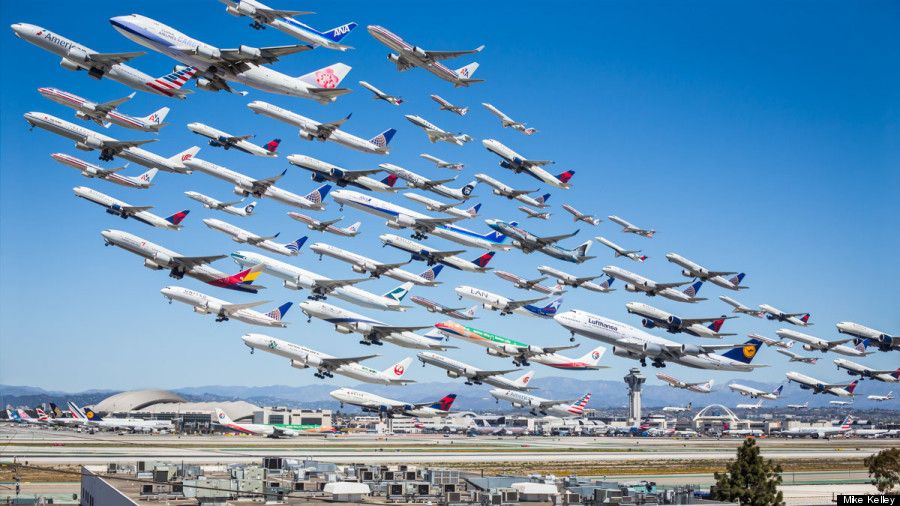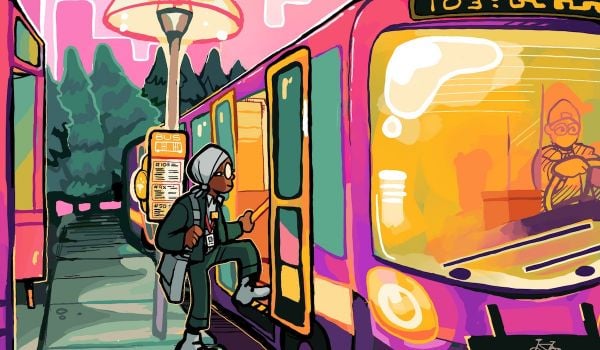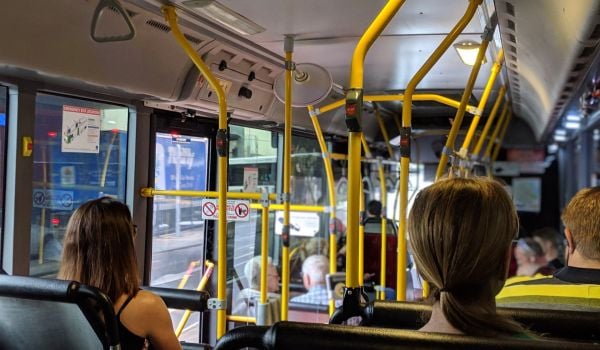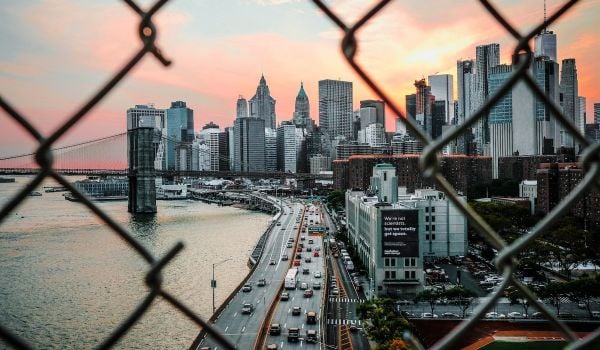If you doubt the world is really comprised of a network of cities — rather than that increasingly creaky construct, the nation-state — look no further than time-lapse photography of global air routes. One can spot the glowing economic cores of Western European, Northeast Asia and the Eastern Seaboard at a glance.
But the strength of those ties is changing. Boeing released its latest 20-year forecast for aviation last week, and it predicts the number of airline passengers will double in the next two decades. The surge in new travelers will produce demand for 36,770 new planes worth $5.2 trillion, and Boeing expects the vast majority of those planes (more than 25,000) will be of the single-aisle variety – preferably a successor to the Boeing 737, as ubiquitous and utilitarian as a city bus. Most of these new customers will be airlines in Asia, as rising incomes in the continent’s emerging middle class propel waves of Chinese, Indian and Indonesian tourists to Phuket and Hainan just as the original 737s ferried Americans to Orlando and Las Vegas.
Such numbers might sound absurd to Westerners – how could there be twice as many passengers in a mere 20 years? But globally, air traffic has already nearly doubled in just the last decade. What’s more, the largest deals in the history of Airbus and Boeing — for 234 aircraft in 2013 worth $24 billion at list prices, and for 230 jets in 2011 worth $22.4 billion, respectively — were both made with an airline most Americans have never even heard of: Indonesia’s Lion Air. “There are three billion people in Asia, there are 300 million people in America. America has about three times more planes right now than Asia,” AirAsia founder Tony Fernandes told Bloomberg Television last year.
Asia’s impending boom in aviation has tremendous implications for such cities as Manila, which, despite being the capital of Southeast Asia’s fastest growing economy and having a metropolitan population of 12 million, suffers from an aging, landlocked airport that’s operating at capacity. One plan to replace it involves designating the outlying Clark International Airport as the city’s long-haul international gateway, despite its being 50 miles away from the city’s periphery. Last month, the government announced plans to build a “green city” and special economic zone on 36.6 square miles of farmland adjacent to the airport as part of a misguided effort to “de-congest” the megacity. An opposing plan would build a new four-runway, $10 billion airport south of the city on land reclaimed from Manila Bay. (Never mind rising seas.)
Hong Kong is considering adding another runway to its own $20 billion island airport, while Beijing is building a second airport to the south of the city. Dubai is going yet a step further, building not just a new airport, but an entire city around it (an “aerotropolis”) for the expected hordes of tourists for Expo 2020. Its hometown airline, Emirates, signed the largest deal in Boeing’s history last week, exploding the old Lion’s Air record with a $56 billion order for 200 Boeing 777X aircraft, the next generation of its long-haul workhorse.
India’s efforts to modernize its airports in Delhi, Mumbai, Bengaluru and Hyderabad have yielded some of the country’s most effective public-private partnerships, with local consortia producing billions of dollars in free revenue for the country’s Airports Authority. Bengaluru’s new airport has proven so successful that AirAsia India recently announced it would move its hub there from Chennai, making it the nation’s third-busiest. With pro-business prime minister Narendra Modi in power, work should continue on the audacious, possibly foolhardy plan to build the Delhi-Mumbai Industrial Corridor, a public-private network of cities — not to mention seven international airports — meant to become India’s new economic engine.
Beyond Asia, the other transformation Boeing expects to see in the world’s urban networks are new city pairs connected by its much-hyped – and then humbled – 787 Dreamliner. With its lightweight composite body, the fuel-efficient long-haul jet is able to carry a smaller number of passengers over longer distances than any wide-body aircraft preceding it. As a result, new linkages such as Houston-Lagos (oil towns), Tokyo-San Jose (tech capitals) and London-Austin (more tech) have started to appear. The upstart airline Norwegian Air Shuttle has started routes from Oslo and Stockholm to Bangkok, New York and Ft. Lauderdale in its own effort to disrupt established players using the economics of the Dreamliner.
Resurrecting the dream of low-fare long-haul — a dream that dates to the 1980s heyday of People Express offering $149 fares from New York to London — will carry a high cost in carbon emissions. Although Boeing doesn’t include it in its forecast, the Intergovernmental Panel on Climate Change predicts aviation’s emissions may double by 2020 and quadruple by 2050, as the energy intensity of jet fuel is difficult and expensive to replicate via renewables at scale. Which means in the near term, at least, more cities can expect to confront the same issues facing British policymakers surrounding the future of London’s airports — expand what you have (Heathrow and Gatwick), wipe the slate and start over (with an island airport in the Thames Estuary), or refuse expansion altogether. One way or another, those Boeing aircraft will have to go somewhere.
The Equity Factor is made possible with the support of the Surdna Foundation.

Greg Lindsay is a contributing writer for Fast Company and co-author (with John D. Kasarda) of the international bestseller Aerotropolis: The Way We’ll Live Next.
His writing has appeared in The New York Times, The Wall Street Journal, Bloomberg BusinessWeek, The Financial Times, McKinsey Quarterly, World Policy Journal, Time, Wired, New York, Travel + Leisure, Condé Nast Traveler and Departures. He was previously a contributing writer for Fortune and an editor-at-large for Advertising Age. Greg is a two-time Jeopardy! champion (and the only human to go undefeated against IBM’s Watson).

















